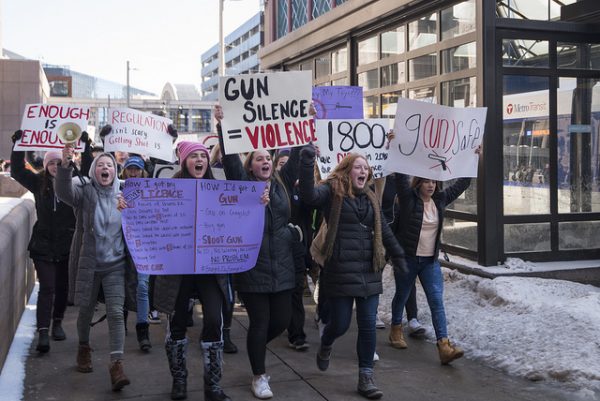
“They say…That us kids don’t know what we’re talking about, that we’re too young to understand how the government works. We call BS.” –Emma Gonzalez
Many of us are still reeling over the killing of 17 students at Marjory Stoneman Douglas High School in Florida nearly three weeks ago. Since then, lawmakers, advocates, and concerned citizens have called for stricter US gun control laws — particularly for assault weapons. Those spearheading the current movement are the teenage survivors of the shooting like Emma Gonzalez and Cameron Kasky. Students around the country are joining their peers in Parkland, Florida for the first annual March for Our Lives rally later this month. From the Freedom Riders and 1960s anti-war protesters to Black Lives Matter and Me Too, youth have played a vital role in shaping social movements. Sociological studies on social movements and young people’s mobilization help us understand the energies behind their activism.
School environments, social networks, and families influence youth civic participation in activities such as volunteering, voting, and engaging in political protest. Campus life, for example, fosters political action by exposing students to an array of social issues, allowing them to congregate in nearby locations, introducing youth to new social networks, and provide the free time necessary to organize. Families where parents were highly politically-involved may also increase youth likelihood of participating in political action. At the same time, parents may serve as a hindrance for some youth, as young women and girls may be more likely to experience parental opposition to their political activism.
- Jennifer Earl, Thomas V. Maher, Thomas Elliott. 2017. “Youth, Activism, and Social Movements.” Sociology Compass 11(4): 1-14.
- Dana R. Fischer. 2012. “Youth Political Participation: Bridging Activism and Electoral Politics.” Annual Review of Sociology 38: 119-137.
- Elvira Cicognania, Bruna Zania, Bernard Fournier, Claire Gavray, and Michel Born. 2012. “Gender Differences in Youths’ Political Engagement and Participation. The Role of Parents and of Adolescents’ Social and Civic Participation.” Journal of Adolescence 35(3): 561-576.
- Hava Rachel Gordan. 2008. “Gendered Paths to Teenage Political Participation: Parental Power,
- Civic Mobility, and Youth Activism.” Gender & Society 22(1): 31-55.
Attention to youth activism raises questions about the effectiveness of political protest more generally. Recalling the 1960 Black student-led sit-in during the Civil Rights movement, one study found that southern cities with sit-ins were more likely to desegregate lunch counters in the months following protest. These social movement successes are often the product of effective framing strategies that depict certain social problems as moral injustices. Moral frames often include identifying victims, blaming those responsible for their victimization, and calling individuals to act against the injustice. Different from prior waves of activism, however, newer generations can utilize social media to transmit moral frames to the broader public. Youth of color, for example, have used profile picture changes, comics, memes, and hashtags to garner support against police brutality and anti-immigration policies.
- Michael Biggs and Kenneth T. Andrews. 2015. “Protest Campaigns and Movement Success: Desegregating the South in the Early 1960s.” American Sociological Review 80:416-443.
- Robert D. Benford and David A. Snow. 2000. “Framing Processes and Social Movements: An Overview and Assessment.” Annual Review of Sociology 26: 611-639.
- Henry Jenkins, Sangita Shresthova, Liana Gamber-Thompson, Neta Kligler-Vilenchik, and Arely Zimmerman. 2016. By Any Media Necessary: The New Youth Activism. New York: New York University Press.

Comments